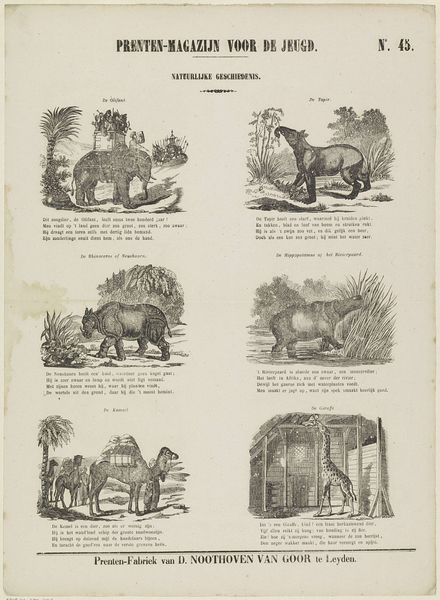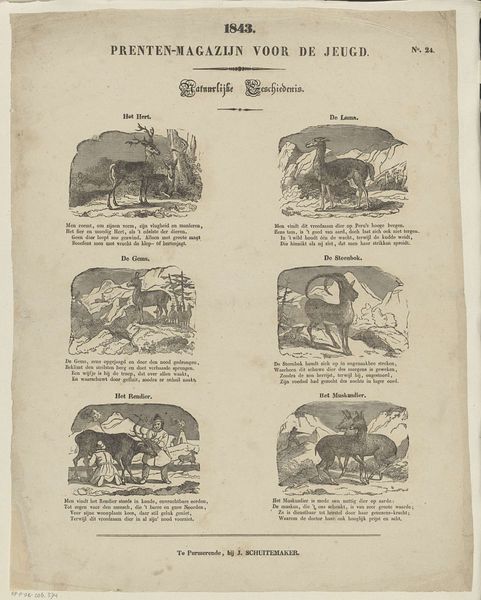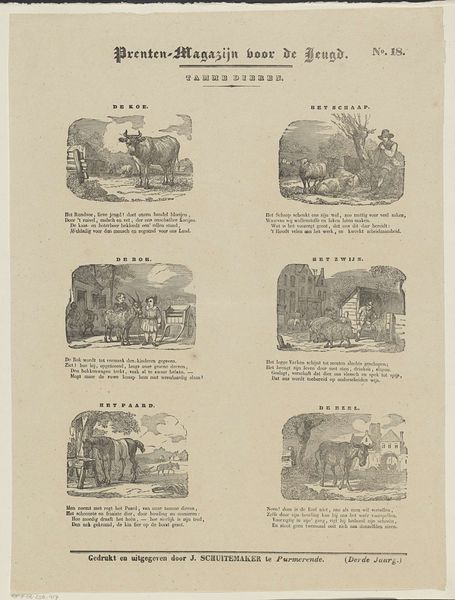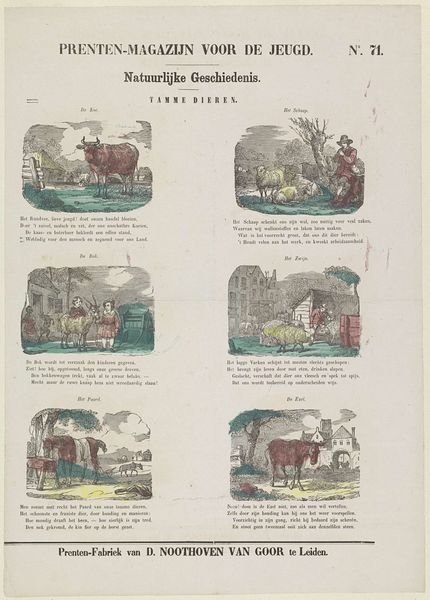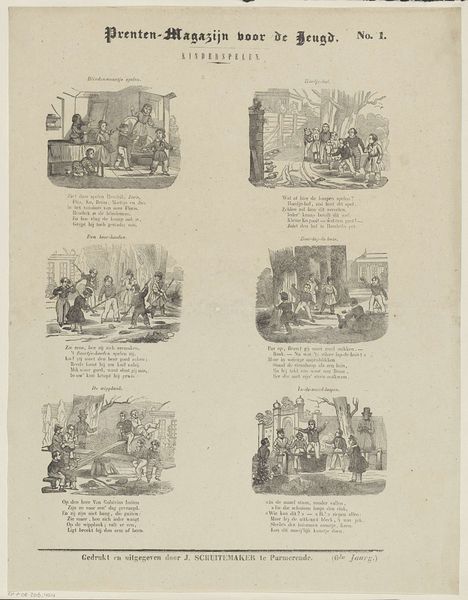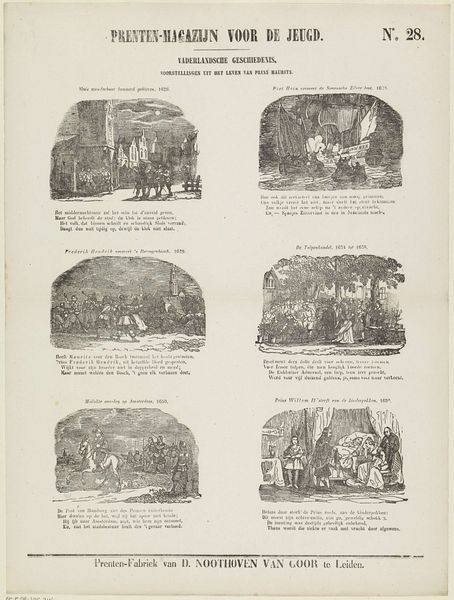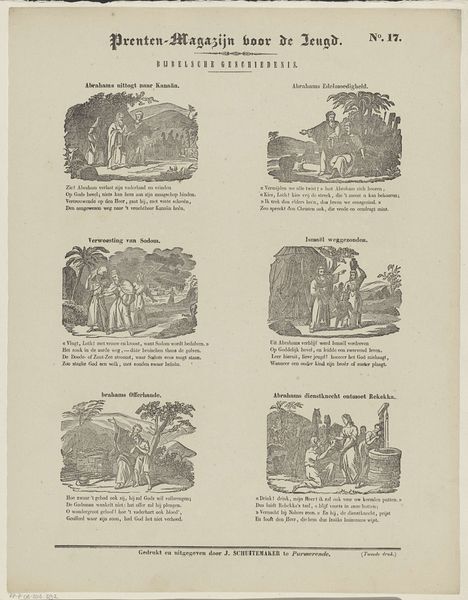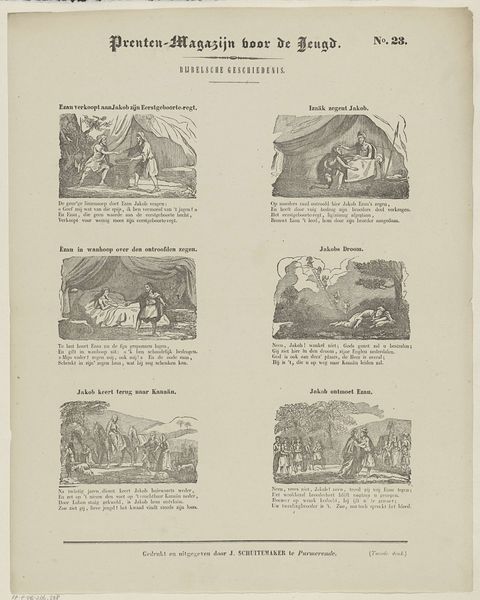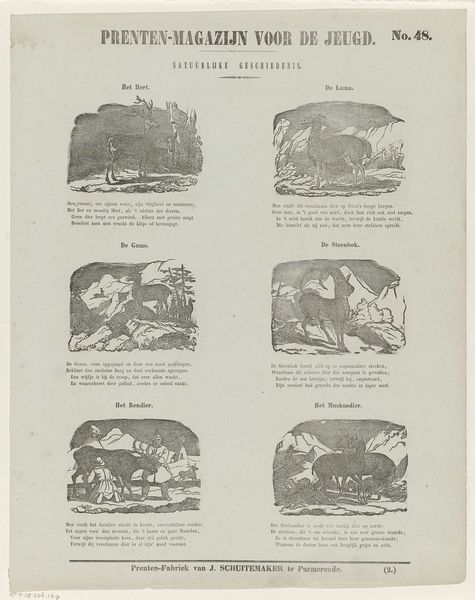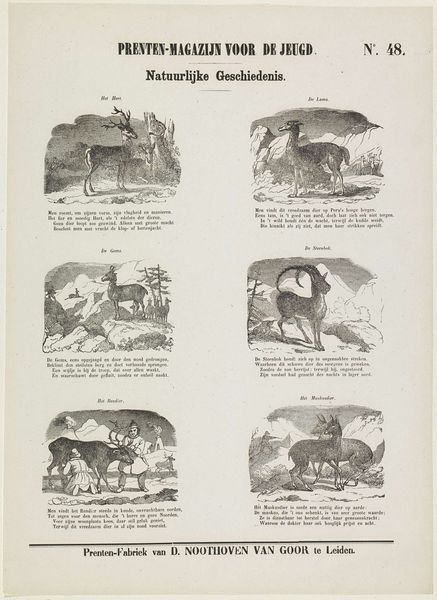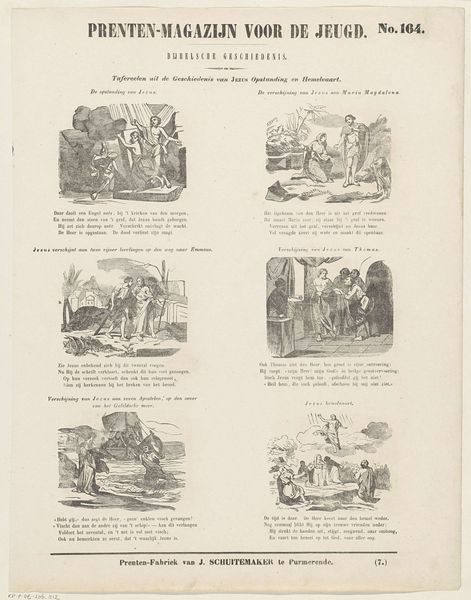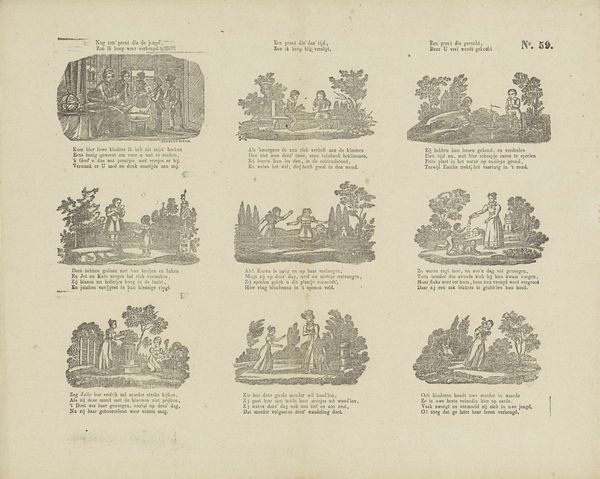
Dimensions: height 416 mm, width 340 mm
Copyright: Rijks Museum: Open Domain
This print by J. Schuitemaker, made in 1843, showcases a collection of animals, each rendered with a naturalist's eye. Consider the camel. In the lower-left panel, it is depicted laden with goods, set against a backdrop of palm trees. This motif has ancient roots, evoking images of the Silk Road and biblical scenes of the Magi. The camel symbolizes endurance, trade, and the exotic Orient, mirroring depictions found in Renaissance paintings. Yet, here, stripped of its usual religious or mythological grandeur, the camel is reduced to a specimen of natural history, reflecting a modern, scientific gaze. Such shifts in meaning reveal the fluid nature of cultural memory. The camel, once a sacred symbol, now serves as a tool for empirical understanding, highlighting the psychological need to categorize and control the natural world through knowledge. The image engages us not merely as a zoological record but as a cultural artifact. The camel's portrayal tells a story of evolving human perceptions, of how symbols are continuously reshaped by cultural and intellectual currents, reminding us of the cyclical dance between past and present.
Comments
No comments
Be the first to comment and join the conversation on the ultimate creative platform.
